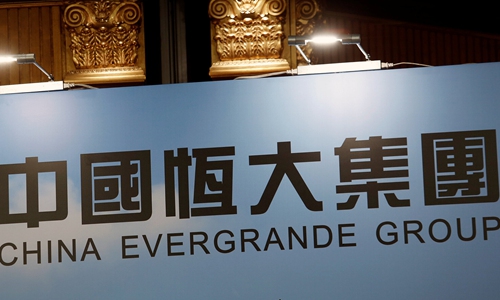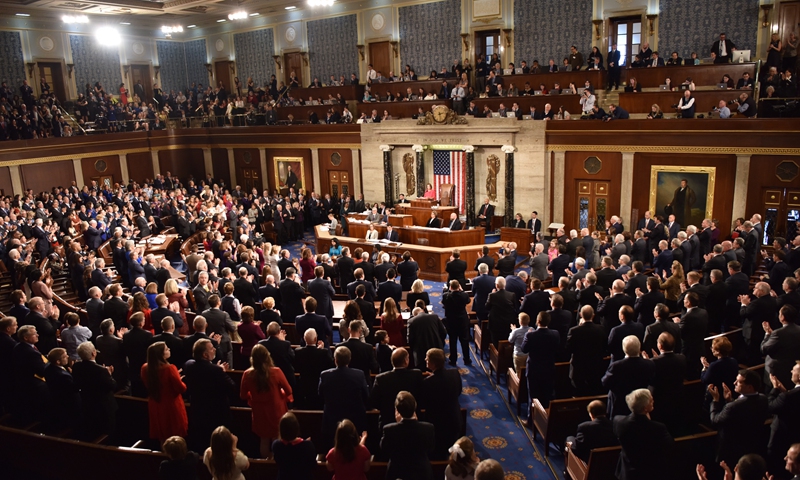The theme for Budget 2022 is "Keluarga Malaysia, makmur sejahtera" (Malaysian family, prosperous and peaceful).
Finance Minister Tengku Zafrul Abdul Aziz said it is based on three core concepts "rakyat yang sejahtera" (people's wellbeing), resilient businesses and a prosperous economy.

Screengrab from the live broadcast of the Budget 2022 speech from Parliament on Oct 29, 2021.
PETALING JAYA: Tengku Datuk Seri Zafrul Abdul Aziz has started delivering his Budget 2022 speech in Parliament here on Friday (Oct 29).
The Finance Minister is expected to deliver a Budget in line with the Malaysian Family concept, which will concentrate on the country's recovery after the Covid-19 pandemic.
On Wednesday (Oct 27) Prime Minister Datuk Seri Ismail Sabri Yaakob said Budget 2022 was from the people, by the people, for the people and would be of high impact for all layers of society and businesses.
Ismail Sabri said Budget 2022 would also generate more jobs to tackle unemployment and enable the recovery process to return the country and its economy to the pre-Covid-19 pandemic with new norms in place.
He added that Budget 2022 was drawn up carefully and comprehensively, taking into account the views of all quarters, including Opposition parties.
Here are the highlights of the Budget 2022 speech as they are delivered:
Budget 2022 allocation
Budget 2022 has a total allocation of RM332.1bil, the largest-ever for the country. This surpasses Budget 2021 allocation of of RM322.54bil.
Tengku Zafrul said this involves RM233.5bil in administrative expenses, RM75.6bil in development, RM23bil for the Covid-19 fund and RM2bil for unexpected expenses.
Family focus
The Bantuan Keluarga Malaysia outlined in Budget 2022 will benefit over 9.6 million recipients with an allocation of RM8.2bil.
Households with three children or more with household income less than RM2,500 will receive RM2,000 in aid. An extra RM500 will be given to for single mothers/fathers with dependents and monthly income of up to RM5,000. This means single mothers/fathers with three children and above are entitled to a maximum RM2,500 in aid.
An additional allocation of RM300 will be given to senior citizens.
Overall, RM2.4bil in welfare aid is allocated to benefit over 440,000 households.
Education first
Education gets the biggest slice of the pie in Budget 2022 with RM52.6bil for the Education Ministry and RM14.5bil for the Higher Education Ministry.
Tengku Zafrul said this includes RM450mil in aid to be provided to three million students.
Health matters
Health Ministry gets an allocation of 32.4bil, the second-largest after the Education Ministry.
From the allocation, RM2bil will be channeled to purchase of vaccines and RM2bil for additional Covid-19 expenses.
He added that the government would be purchasing another 88 million doses of vaccines, which includes the third dose for children between the ages of 12 and 17.
PTPTN repayment incentives
Government to give discounts to PTPTN borrowers for payments from Nov 1 to April 30.
Borrowers will get a 15% discount for full settlement; 12% for payments of at least 50% of the outstanding balance in a single payment. Those who make repayments through salary deduction or scheduled direct debit will get a 10% discount.
Just for jobs
Allocation of RM4.8bil to create 600,000 job opportunities under the JaminKerja initative.
With a target of 300,000 hires, the initiative will offer incentives to employers such as 20% of the first six months' pay, and 30% of the following six months pay for hired employees making above RM1,500.
Among others, RM1.1bil has been allocated for training and upskilling programmes for 220,000 trainees.
The Technical and Vocational Education and Training (TVET) sector will receive an allocation of RM6.6bil under Budget 2022.
Tengku Zafrul said the focus is on eeting industry needs and an additional allocation of RM200mil has been allocated for joint venture programmes with industries.
Boosting healthy lifestyles
There will be an excise duty imposed on nicotine-based gel or liquid products for vaping and electronic cigarettes, says the Finance Minister.
"Towards a healthy lifestyle the government plans to broaden the scope of excise duty to include premix sugary drinks made from chocolate, malt, coffee and tea," said Tengku Zafrul.
Women matters
The goverment will make it mandatory for all publicly-listed companies to appoint at least one woman to its board of directors.
Tengku Zafrul said RM5mil would also be allocated for the Women Leadership Foundation to encourage female participation in the economic sector.
Free self-hygiene kits will be given to young women in the B40 category monthly, which will benefit some 130,000 youths nationwide.
Tengku Zafrul added that RM11mil would be allocated for free mammogram and cervix examinations.
New villages
A total of RM200mil has been allocated for the Chinese community, among them for the purpose of upgrading Chinese new villages, as well as financing schemes for the small and medium enterprises (SMEs).
RM145mil has been set aside for the Indian community, among them for the implementation of programmes to strengthen the community's social economy through Tekun Nasional, the national Entrepreneurial Group Economic Fund, under the Indian Entrepreneurs Development Scheme.
Levelling up eSports
To push the eSports industry in the country, RM20mill will be allocated under Budget 2022.
This includes RM5mil to develop an excellence centre for drone sports in the country.
Housing for all
RM1.5bil has been allocated for continuing low-cost housing projects. Another RM2bil allocated for housing credit guarantee scheme to help those without a stable income to buy a house.
Tengku Zafrul also said the government would no longer impose the real property gains tax (RPGT) on Malaysians, permanent residents and companies when they dispose of their real property assets from the sixth year onwards.
For sporting excellence
To further improve the national Paralympics team, the National Sports Council (NSC) will receive a RM10mil allocation. This is to enhance training programs and organise leagues for various sports to prepare for the 2024 Paris Paralympics.
RM158mil will be allocated to renovate, enhance and build sporting facilities around the country.
RM50mil will be allocated to encourage people to continue leading an active lifestyle.
Cash in hand
Employees’ contribution rate to the Employees Provident Fund (EPF) that was reduced to 9% in 2020 will remain until June 2022.
Boost for youths
A RM300mil allocation to provide RM150 in credit into eWallets of youth aged 18 to 20 who are students at institutions of higher learning.
Lower vehicular taxes continue
To reduce the cost of vehicle ownership, the government will extend the 100% sales tax exemption on completely knocked down (CKD, locally-assembled) passenger vehicles and 50% on completely built-up (CBU, imported cars) including MPVs and SUVs for six months until June 30, 2022.
The exemption was introduced by the government in 2020 to drive sales in the automotive sector which was affected by the Covid-19 pandemic.
Defending the nation
The Defence Ministry will get an allocation of RM16bil, of which RM1.6bil is to upgrade the readiness of main assets of the Armed Forces. This allocation also involves RM14mil to replace main equipment of Naval Special Forces (Paskal) and Air Force Special Forces (Paskau) such as parachutes, closed-circuit diving equipment and boats.
e-vehicles to get a power up
Tengku Zafrul said the government sees the potential of electronic vehicles (EV) to minimise pollution, and therefore plans to give up to 100% exemption of import and excise duties as well as sales tax.
Road tax exemptions of up to 100% will also be given out for electronic cars.
Tax relief of up to RM2,500 will be given for the purchase, assembly, renting and leasing of EVs.
Tourism budget
A total of RM1.6bil has been allocated for the tourism industry. RM600mil will be allocated under the Penjana Tourism Financing dan BPMB Rehabilitation Scheme while RM85mil will be go towards a three-month special assistance for over 20,000 tourism operators.
Zafrul also announced matching grants for the purpose of the renovation of budget hotels and homestays, with an allocation of RM30mil.
To spur domestic tourism, the RM1,000 tax rebate will be extended until 2022.
Sabah and Sarawak
The two states will receive increased development allocations of RM5.2bil and RM4.6bil respectively under Budget 2022.
Fisheries and agriculture
RM1.7bil allocated for the various incentives and subsidies for the fisheries and agriculture industries.
Please folllow The Star's coverage of Budget 2022 here.










 According to Bank Negara’s Financial Stability Review report for the first half of 2021, Malaysia’s household debt to GDP has declined to 89.6% from 93.2% as at end of last year. Although a small achievement,the household debt level remains elevated.
According to Bank Negara’s Financial Stability Review report for the first half of 2021, Malaysia’s household debt to GDP has declined to 89.6% from 93.2% as at end of last year. Although a small achievement,the household debt level remains elevated.














 The FM really got SHOCKED when LGE asked him whether the budget was approved by the cabinet. Watch the video.
The FM really got SHOCKED when LGE asked him whether the budget was approved by the cabinet. Watch the video.






